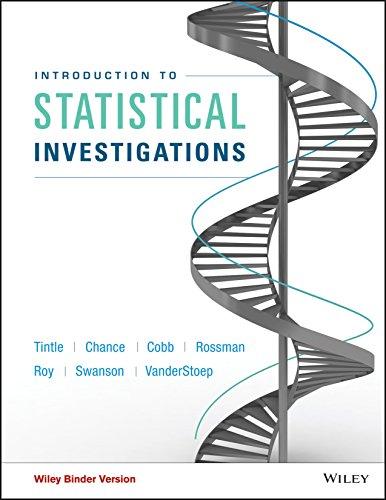In an article published in Psychology of Music (2010), researchers reported the results of a study conducted
Question:
In an article published in Psychology of Music (2010), researchers reported the results of a study conducted to investigate the effects of “romantic lyrics on compliance with a courtship request.” Th e researchers recruited undergraduate female students who were studying social and managerial science and told them that “the purpose of the study was to discuss organic products with another participant.” When a participant came in for the study, she was randomly assigned to listen to either a romantic song or a neutral song. After three minutes, she was greeted by a male “confederate” (chosen and trained by the researchers to pretend to be another participant), who while discussing the organic products also asked for her phone number so that he could call her up to ask her out.
The male confederate was kept unaware of the aim of the study and was trained to use the same script when talking to all the females. Of the 44 women who listened to the romantic song, 23 gave their phone numbers, whereas of the 43 who listened to the neutral song, only 12 did.
a. Was this an experiment or an observational study? Explain how you are deciding.
b. Notice that neither the participants nor the male confederate were aware of the aim of the study and thus did not know who was getting what treatment. This is called double blinding. Explain why the researchers used double blinding.
c. Identify the observational units.
d. Identify the two variables recorded. Also, for each variable, be sure to identify the kind of variable (categorical or quantitative) and the role of the variable (explanatory or response).
e. Organize the counts in a well-labeled 2 × 2 table.
f. Find the observed difference in the conditional proportion of females who gave their phone number to the male confederate between those who listened to the romantic song and those who listened to the neutral song.
g. Give two possible explanations for the observed difference in conditional proportions as reported in part (f).
Step by Step Answer:

Introduction To Statistical Investigations
ISBN: 9781118172148
1st Edition
Authors: Beth L.Chance, George W.Cobb, Allan J.Rossman Nathan Tintle, Todd Swanson Soma Roy





